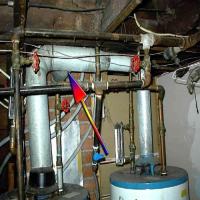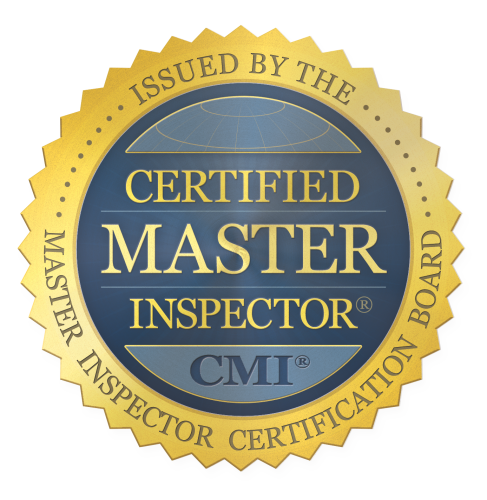Our Book - YOUR HOUSE, YOUR HOME
This is an example of a page from our book, YOUR HOUSE, YOUR HOME. We are proud of it and happy to give it free with every inspection. The book makes our home inspection report very complete. Together with the report, YOUR HOUSE, YOUR HOME, helps every home buyer able to completely evaluate a purchase right after the inspection. The book is currently in its 38th edition, is 416 pages, two columns per page, and notebook sized. It comes in a convenient binder. It is updated frequently, at least once every 12 or 14 months, and is so logical and understandable everyone can use it. If you have a copy you already appreciate it as one of the best home-owner references in the industry today. And if you move from the Northern Virginia area to another state, it will be just as good and just as complete a reference there too!
How The Book Is Used
Your home inspection report might make a mention about something discovered during the home inspection, such as, say, improper venting of gas appliances and their flue design. A reference to the book would be added to the inspection report comment - 6C.33. That refers you to chapter 6, section C, paragraph bullet .33. Turning to that reference in the book, you would see:
6C.33 FLUE SHARED

(If you use firewood, read 6W; and see 6C.10)
Using the same flue for any two appliances is not considered to be good practice. However, most (not all) codes allow more than one gas appliance or an oil and a gas appliance to connect to a single vent provided that both appliances are on the same floor, neither appliance uses a fan to provide forced draft, and the inlets are offset – the smaller appliance should have an inlet into the vent that is above the inlet from the larger appliance. Exception: Engineered systems may be designed for appliances placed on different floors.
Updated rules allow venting of fan-assisted furnaces and natural-draft water heaters into the same flue provided that the furnace vent fan does not produce a positive pressure – that is, a pressure that is greater than ambient air pressure (a pressure that great could drive the water heater’s exhaust gasses out of the vent hood and into the household air).
Furnaces that are approved for shared venting with a natural-draft water heater are identified on their label as Category I or Category II appliances. These units have weak fans that merely assist the airflow over the heat exchanger. Once the air is in the vent, the natural buoyancy of the air carries the exhaust up the vent (i.e., the negative pressure in the vent allows the greater pressure in the house to drive the gases up the vent).
The “T” connection shown in the photo is not as good as a configuration in which the furnace entered the chimney at a lower point than the vent from the water heater. This is such a dangerous configuration that now it is prohibited almost everywhere. Similarly, two connector pipes should not enter opposite sides of the vent at the same level. If one or both of the appliances is oil-fueled, the flue must be Class-A chimney (galvanized or stainless steel, with no aluminum piping).
Solid-fueled appliances may not vent into the same vent system used by appliances that use other fuels. Even use of the same flue by two solid-fueled appliances generally is prohibited (although some prefabricated fireplaces are designed to use the same flue for two fireplaces on separate floors). Among other problems, any appliance vented into the solid-fueled appliance’s flue is likely to affect the draft in unpredictable ways.
Because solid-fueled appliances, especially, produce immense quantities of deadly carbon monoxide and many other pernicious exhausts, it is essential for safety that a good draft be maintained (see .10).
Adding an additional flue that extends through the roof is likely to cost at least a few hundred dollars even for a one-story house. Consultation with a holder of a mechanical license or a mechanical engineer specialist is recommended. A smaller vent connector pipe should enter the flue above the connector pipe from the larger appliance.
Page 2 of Chapter 6, Heating/Air-Conditioning, Article 6C: Common Concerns - Heating and Air-Conditioning. See 6A for definitions and explanation of the concepts discussed herein.
That's it! The book has over 3,000 corresponding pictures and diagrams for many of the references. Your inspection report would have many such references which describe whatever types of problems that might be encountered in your home inspection. Every item reported cross references directly to the page in the book that discusses it. The report is easy to follow and understand. The book is too!
